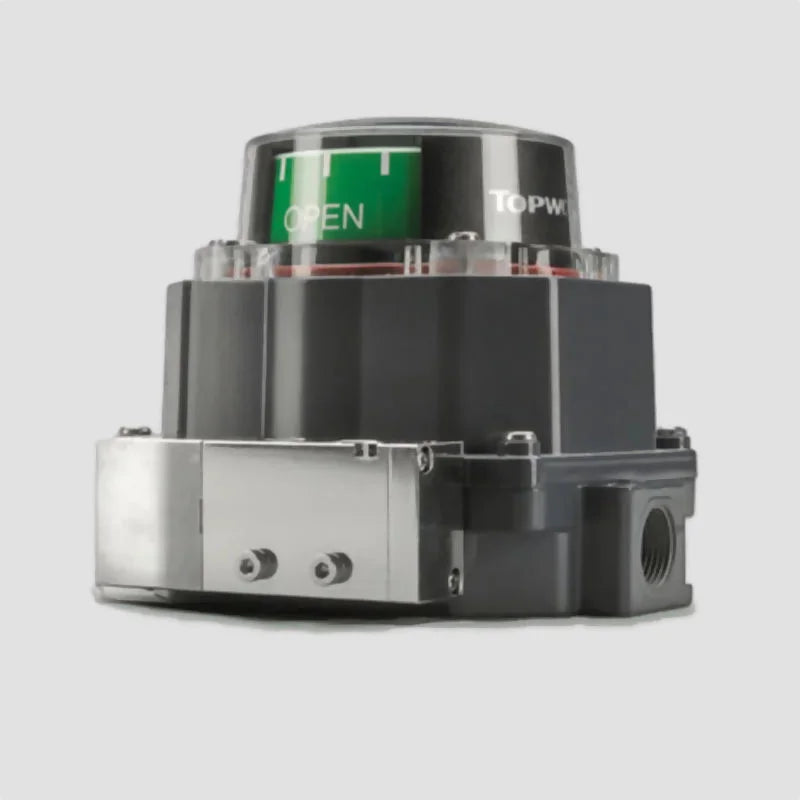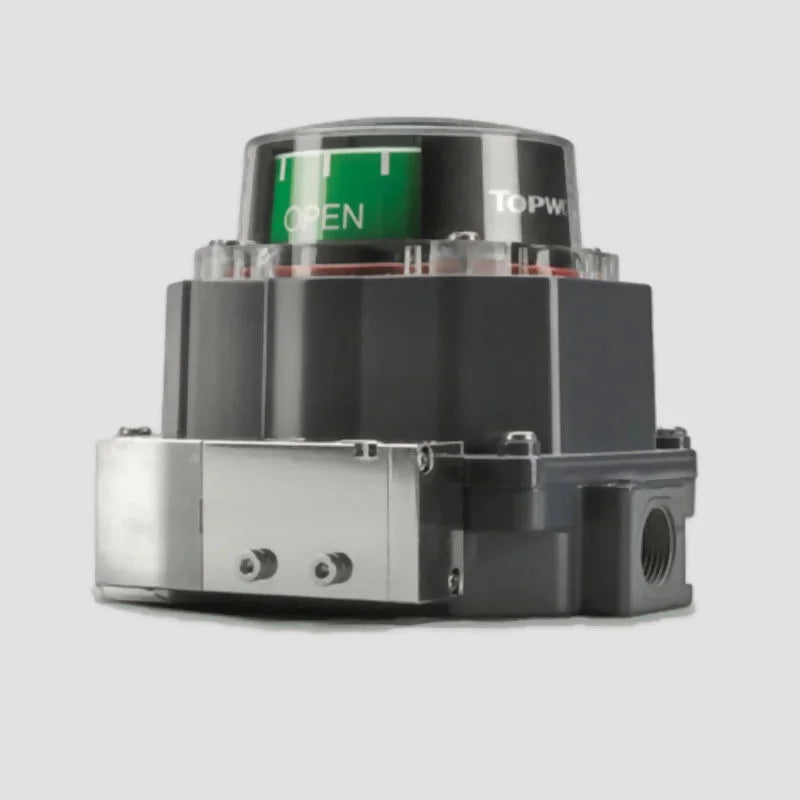Topworx Switchboxes
TopWorx Limit Switch Box TVL-R2WGLMM Valve Monitor
TopWorx Limit Switch Box TVL-R2WGLMM Valve Monitor
Couldn't load pickup availability
The TopWorx TVL-R2WGLMM Limit Switch Box is a compact and rugged valve monitor designed for precise and reliable feedback of quarter-turn valve positions. As part of the trusted TopWorx TVL Series, this model combines mechanical durability, IP67 protection, and universal mounting to suit a wide range of industrial automation applications.
Fitted with 2 mechanical SPDT switches and a NAMUR mounting interface, the TVL-R2WGLMM provides dependable open/closed position indication for pneumatic actuators. Its visual dome indicator offers clear local visibility, while the glass-filled polyester housing resists corrosion and harsh environmental conditions. This valve monitor is ideal for use in oil and gas, chemical processing, food and beverage, and water treatment industries.
🔑 Key Features:
2 SPDT Mechanical Switches: Delivers reliable valve position feedback signals
Dome Visual Indicator: Provides instant open/closed position confirmation
Universal NAMUR Mounting: Compatible with most pneumatic actuators
IP67 Weatherproof Housing: Sealed against water and dust ingress
Robust Construction: Made from corrosion-resistant glass-filled polyester
Dual Cable Entries: 2 × 1/2” NPT conduit entries for flexible wiring
Easy to Install: Pre-wired and factory-tested for fast integration
Proven Reliability: Designed for performance in harsh environments
📊 Product Specifications
| Specification | Details |
|---|---|
| Model | TVL-R2WGLMM |
| Manufacturer | TopWorx (Emerson) |
| Series | TVL Series |
| Switch Type | 2 × SPDT Mechanical Switches |
| Visual Indicator | Open/Closed Dome Indicator |
| Mounting Interface | NAMUR Standard |
| Enclosure Rating | IP67 |
| Conduit Entries | 2 × 1/2” NPT |
| Material | Glass-Filled Polyester |
| Operating Temperature | -40°C to +85°C |
| Certifications | CE, CSA, ATEX (depending on configuration) |
| Common Applications | On/Off Valves, Pneumatic Actuators, Industrial Automation |
The TopWorx TVL-R2WGLMM Limit Switch Box delivers the reliability and precision required for modern valve automation. Whether you're retrofitting existing valves or building a new control system, this model ensures consistent performance and reduced maintenance downtime.
📞 Looking for expert advice or ready to order? Contact our team today for availability and support!
Share

Enquire Online!
FAQ's
What is the difference between a valve and an actuator?
What types of actuators are available?
The main types of actuators are:
Pneumatic actuators – use compressed air for fast, reliable operation.
Electric actuators – use electrical power for precise control.
Hydraulic actuators – use fluid pressure for high-torque applications.
Each type offers unique advantages depending on the environment, media, and system control needs.
How do I choose the right actuator for my valve?
To select the correct actuator, consider:
Valve type and torque requirement
Power source available (air, electric, or hydraulic)
Operating environment (temperature, humidity, hazardous area)
Control signal type (on/off or modulating)
Matching actuator torque and compatibility with the valve’s ISO mounting ensures reliable performance.
What are the main types of valves used in automation?
The most common valves in automated systems include:
Ball valves – for tight shutoff and quick operation.
Butterfly valves – for larger flow control with compact design.
Globe valves – for precise throttling and flow regulation.
Check valves – to prevent backflow.
Gate valves – for full bore flow isolation.
What’s the difference between a double-acting and spring-return actuator?
Double-acting actuators use air (or power) to both open and close the valve.
Spring-return actuators use air to open (or close) the valve, and a built-in spring to automatically return it to a safe position when power or air is lost — ideal for fail-safe operation.
How often should valves and actuators be serviced?
Regular maintenance intervals depend on operating conditions, but a good rule of thumb is to inspect every 6–12 months.
This includes checking for leaks, lubrication, seal wear, and actuator responsiveness to prevent unexpected downtime.

